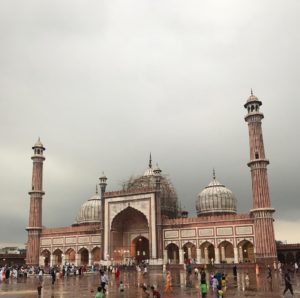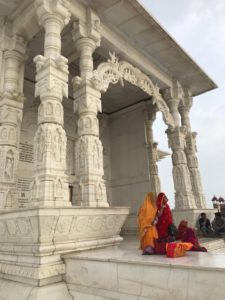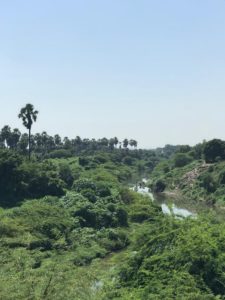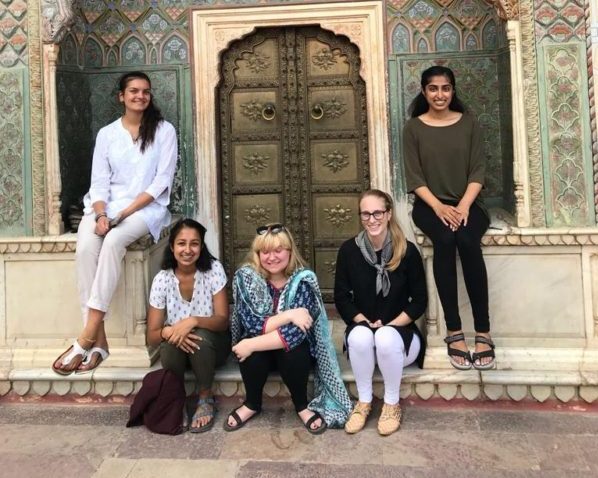Where:
I am currently on my year abroad in Jaipur, Rajasthan, India, studying Hindi at the American Institute of Indian Studies (AIIS). AIIS specialises in immersion-based language courses throughout India, mainly aimed at American university (undergraduate, postgraduate and PHD) students. Jaipur is the capital of the state of Rajasthan in Western India, and part of India’s famous ‘Golden Triangle’ tourist circuit. It is also nicknamed the Pink City, due to the pink colour of the buildings in the old town, making it a beautiful city to study in.

First Impressions:
It’s surprising how quickly humans can adapt when the only constant around you is yourself. Having never lived away from home, I’m still anticipating the homesickness, or ‘London-sickness’. But in a place where everything is so different, and no two days are the same, it’s near impossible to make comparisons to life back home. Every day I realise more and more, that this year abroad is about what I’m gaining and not what I’m losing.
It’s hard to translate photos into experiences. The smells, the tastes and conversations all are so unique that I’m lucky to hold them as memories. Despite inevitable difficulties and constant adjustments to ‘adulting’ here, getting through difficult situations just highlights how necessary it is to get out your comfort zone. You feel like you can patiently get through anything after experiencing Indian bureaucracy!
Travel:
I feel so spoilt to have so many places to travel to at my fingertips. Travel is affordable, although time-consuming, and has so far allowed me to visit old Delhi in late monsoon season, travel overnight to Gujarat during Navratri season, and see the Taj Mahal and Fatehpur Sikri.

Accessible travel encourages us to make the most of our long weekends, and see as much of India as possible. Each region has its own distinct specialties; whether that be Jaipur’s own hand-block textiles, mirror-embedded Chaniya Cholis of Gujarat, the tasty aloo pyaaz ki saabzi of Rajasthan or the live qawwali at Nizamuddin Dargah in Delhi, only touches on the diversity of regional food, textiles and arts and culture that India offers.

Everyday Life:
Despite not being in academia, and having a 5-day week of sole language tuition, I still feel like my views on politics, feminism and even my own identity are constantly being challenged in different ways. “Where are you from?” has different connotations. People question why ‘foreigners’ are buying steel Karahi’s from a street cart outside Jaipur’s tourist hub, or returning to the fruitwala every day in desperate hope of fresh sitafal (custard apple).
Living in a new society highlights our privilege as western university students studying in India. We are able to enter a social system without many of the social, class or caste barriers faced by Indian students our own age. The on-going issues, which we may have studied, read in-depth on, and written essays about are not treated in the same way as in our institutions. Talking ‘freely’ about topics such as communalism or the rise of fascism in India can be met with much more controversy and censorship than we’re used to facing in our classrooms. Understanding these differences is necessary for working to create change, as well as learning from the alternative approaches taken in these situations.

Gender:
The politicisation of women in India, by the Indian state and also by the west, is not a new phenomenon and continues to take different forms. From the gendered nationalist discourse of Bharat Mata to sexism in Bollywood films, the patriarchal structure here seems more blatant than the west, but also similar in many ways. The horrific violence faced by Indian women each day and experiences of harassment leads to the self-autonomy of women in India being depicted as alien. However, rebellion takes many forms here. A comparison of life as a woman in London or Jaipur is impossible when both contexts and their histories are so different. Yet this doesn’t deny the consciousness you feel walking alone as a woman here.

Differences:
Using TFL delays as excuses for lateness have been replaced by not being able to leave the house due to packs of monkeys cornering the door. Waking up to the sound of building works has been replaced by the shouts of the wondering street sellers. A day divided by hours has now been replaced by a day divided by chai breaks. And rowdy pubs during football games have been replaced with regular religious processions of elephants, camels and live music filling the late evening.
This experience in India contrasts heavily with my previous visits to family here and has demonstrated to me how much I actually can do. From 12-hour solo train journeys to starting to learn Indian classical music, there are so many ways to learn more about myself, as well as South Asia from a multitude of perspectives. Studying Hindi is essentially learning a mixture of Persian, Arabic and Sanskrit, which also gives access to the multiple histories of South Asia. It’s beautiful to be able to see historical sites I’ve studied or read about, and witness the weaving of languages, traditions and cultures around me, which work to create the incredible syncretism of South Asia.

